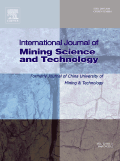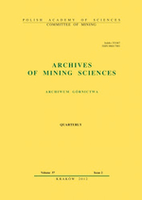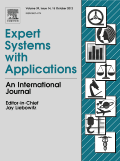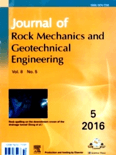
International Journal of Mining Science and Technology
Scope & Guideline
Connecting Minds in Mining Science and Technology
Introduction
Aims and Scopes
- Mining Engineering and Technology:
Research on engineering principles and technologies applied in mining operations, including advanced extraction methods, equipment performance, and automation. - Rock Mechanics and Geomechanics:
Studies on the mechanical behavior of rocks, including failure mechanisms, stability analysis, and the interaction of rock structures with mining activities. - Mineral Processing and Metallurgy:
Innovative approaches to the processing of minerals, including flotation techniques, leaching processes, and the development of new reagents and collectors. - Environmental Impact and Sustainability:
Research addressing the environmental effects of mining practices, including waste management, pollution control, and sustainable resource extraction. - Geotechnical Engineering:
Investigations into ground stability, subsidence, and support systems in underground mines, focusing on the interaction of geological conditions and mining operations. - Data Science and Machine Learning Applications:
Application of data analytics, machine learning, and artificial intelligence for predictive modeling, operational efficiency, and real-time monitoring in mining.
Trending and Emerging
- Sustainable Mining Practices:
There is an increasing emphasis on sustainability, including studies on reducing the environmental impact of mining, waste recycling, and the use of eco-friendly materials. - Advanced Computational Modeling:
The integration of computational models, including finite element and discrete element methods, is gaining traction for simulating complex mining scenarios and rock behavior. - Automation and Robotics in Mining:
Research on automation technologies and robotics for improving efficiency and safety in mining operations is on the rise, reflecting industry trends towards reducing human intervention. - Geothermal and Energy Storage Applications:
Emerging studies on the utilization of mining sites for geothermal energy and underground energy storage solutions highlight the evolving role of mining in energy management. - Smart Mining Technologies:
The development of smart technologies, including IoT applications and real-time monitoring systems, is becoming a focal point, enhancing operational efficiency and safety.
Declining or Waning
- Traditional Mineral Exploration:
Research focused on conventional methods of mineral exploration has decreased, possibly due to the increasing reliance on advanced technologies and data-driven approaches. - Conventional Blasting Techniques:
Studies on traditional blasting methods for rock fragmentation have waned, suggesting a transition towards more innovative and environmentally friendly alternatives. - Basic Geological Surveys:
The frequency of basic geological surveys and mapping studies has diminished, likely overshadowed by more complex geotechnical and engineering-focused research. - Manual Mining Techniques:
Research related to manual or artisanal mining techniques has become less prominent, as attention shifts towards mechanization and automation in the mining sector.
Similar Journals

Upstream Oil and Gas Technology
Exploring New Frontiers in Oil and Gas TechnologyUpstream Oil and Gas Technology, published by Elsevier, is a leading journal dedicated to advancing knowledge and innovation in the upstream oil and gas sector. With an ISSN of 2666-2604, this journal offers insightful research articles and critical reviews from 2019 to 2023, creating a valuable repository of knowledge for professionals and academics alike. Strategically positioned in the Q2 quartile of various related fields, including Chemical Engineering, Fuel Technology, and Geophysics, it holds impressive Scopus rankings, such as Rank #30 in Geophysics, demonstrating its significant impact within the scientific community. Although currently not operating under an open access model, the journal remains accessible through institutional subscriptions, ensuring that essential research is readily available to those in the industry. The editorial objectives focus on promoting high-quality research that addresses contemporary challenges in exploration, production, and sustainable practices within the upstream oil and gas domain, making it an invaluable resource for researchers, students, and industry professionals.

Journal of Mining and Environment
Connecting research and sustainability in mining environments.Journal of Mining and Environment, published by Shahrood University of Technology, is a pivotal peer-reviewed journal dedicated to advancing the fields of geochemistry, petrology, geophysics, geotechnical engineering, and pollution studies. With its ISSN 2251-8592 and E-ISSN 2251-8606, this journal aims to disseminate significant research findings that address critical environmental challenges associated with the mining industry. Operating out of Iran, the journal has quickly established itself in the academic arena, achieving a Q3 quartile ranking across multiple categories in 2023, highlighting its contribution to the scientific community's understanding of mining-related environmental impacts. Accessible to researchers, professionals, and students, the journal emphasizes open dialogue and interdisciplinary collaboration, focusing on innovative methodologies and sustainable practices that can shape the future of mining and environmental stewardship. With a commitment to quality and relevance, the Journal of Mining and Environment is an essential resource for anyone engaged in the crucial intersection of mining processes and environmental integrity, encouraging submissions that push the boundaries of current knowledge.

Archives of Mining Sciences
Advancing knowledge in mining and geology.Archives of Mining Sciences is a peer-reviewed journal published by the Polska Akademia Nauk (Polish Academy of Sciences), dedicated to advancing knowledge in the fields of geochemistry, petrology, geotechnical engineering, and engineering geology. With an ISSN of 0860-7001 and an E-ISSN of 1689-0469, this journal has been a vital resource for professionals and researchers since its inception in 1991. Housed in Poland, the journal serves as a platform for the dissemination of significant research results, technical developments, and case studies, ensuring accessibility to a global audience. Competing in a rigorous landscape, it has achieved a notable Q3 ranking in 2023 within both the Geochemistry and Petrology and Geotechnical Engineering and Engineering Geology categories. As it converges through its years of publication—currently covering the period from 2008 to 2024—the journal maintains a strong focus on fostering innovative research that addresses crucial geological challenges. Its presence in Scopus rankings reinforces its commitment to quality and relevance, making it an essential read for students and professionals seeking to stay at the forefront of mining sciences.

Riset Geologi dan Pertambangan
Exploring the depths of knowledge in geology and mining.Riset Geologi dan Pertambangan is an esteemed open-access journal published by the Indonesian Institute of Sciences, R&D Centre Biology, dedicated to advancing research in the fields of geology and mining. With an ISSN of 0125-9849 and an E-ISSN of 2354-6638, this journal has been fostering the dissemination of knowledge since 2005, ensuring that critical findings are accessible to a global audience. The journal serves as an important platform for researchers, professionals, and students to share innovative research, methodologies, and case studies that contribute to sustainable mining practices and geological advancements. By promoting interdisciplinary collaboration and the latest developments in the field, Riset Geologi dan Pertambangan plays a vital role in shaping the future of geology and mining research, particularly within the Southeast Asian context.

SPE JOURNAL
Transforming Challenges into Sustainable SolutionsSPE JOURNAL, published by the Society of Petroleum Engineers, is a leading academic journal that provides a platform for the dissemination of high-quality research in the fields of energy engineering, geotechnical engineering, and engineering geology. With a solid impact demonstrated by its Q1 ranking in both Energy Engineering and Power Technology, as well as Geotechnical Engineering, the journal is well-positioned to influence advancements in sustainable energy practices and geotechnical methodologies. Covering research from 1969 through 2024, the SPE JOURNAL is dedicated to publishing innovative studies that contribute to the field's body of knowledge while addressing the challenges facing the global energy landscape. Though it does not offer open access, the journal’s rigorous peer-review process ensures that published works are of the highest academic quality, making it an essential resource for researchers, professionals, and students alike aiming to stay at the forefront of energy and geotechnical developments.

EXPERT SYSTEMS WITH APPLICATIONS
Empowering Research, Transforming IndustriesEXPERT SYSTEMS WITH APPLICATIONS is a premier journal published by PERGAMON-ELSEVIER SCIENCE LTD, dedicated to showcasing cutting-edge research in the fields of Artificial Intelligence, Computer Science Applications, and Engineering. With an esteemed Q1 ranking across multiple categories, this journal not only reflects high-quality scholarship but also plays a pivotal role in advancing the application of expert systems and intelligent technologies in various sectors. Operating from the United Kingdom, it features a wide range of insightful articles that address complex challenges and offer innovative solutions through interdisciplinary approaches. Researchers and practitioners can access invaluable resources to inform their work, contributing to the journal's strong reputation and growing readership. With its convergence of relevant technologies from 1990 to 2025, EXPERT SYSTEMS WITH APPLICATIONS stands as an essential source for those aiming to push the boundaries of knowledge in these thriving fields, making it a key platform for both established experts and emerging scholars.

Journal of Rock Mechanics and Geotechnical Engineering
Championing Open Access for Groundbreaking Geotechnical DiscoveriesThe Journal of Rock Mechanics and Geotechnical Engineering is a premier open-access publication dedicated to advancing the field of geotechnical engineering and engineering geology. Published by SCIENCE PRESS and based in China, this journal has been a vital resource for researchers and professionals since it transitioned to open access in 2013. With ISSN 1674-7755 and E-ISSN 2589-0417, it has established a global reputation, evidenced by its impressive Q1 ranking in the category of Geotechnical Engineering and Engineering Geology as well as a remarkable 8th rank out of 229 in Earth and Planetary Sciences, placing it in the 96th percentile according to Scopus. The journal aims to publish high-quality research that addresses contemporary challenges in the field, offering insightful perspectives and innovative solutions. Researchers, professionals, and students are encouraged to engage with the latest findings and methodologies published within its pages, which span from 2013 to 2024 and continue to pave the way for future advancements in geotechnical practices.

Journal of Mining Institute
Exploring Sustainable Solutions in Geotechnical EngineeringThe Journal of Mining Institute, published by SAINT-PETERSBURG MINING UNIVERSITY, stands as a premier platform for disseminating cutting-edge research in the fields of Economic Geology, Geology, and Geotechnical Engineering. With an impressive Q1 ranking in various quartiles for 2023, this journal offers enlightening insights into earth sciences, reflecting its substantial impact within the academic community. The journal, accessible in open access format since 1975, ensures that researchers, professionals, and students can readily access high-quality research articles. The ISSN for the print version is 2411-3336 and E-ISSN 2541-9404, supporting its reach both online and offline. As it converges knowledge from 2017 to 2024, the Journal of Mining Institute serves as an essential resource for understanding contemporary challenges and innovations in mining and geology, encouraging a collaborative exploration of sustainable practices and technological advancements in these critical fields.

Mining Technology-Transactions of the Institutions of Mining and Metallurgy
Pioneering Research for a Safer Mining IndustryMining Technology - Transactions of the Institutions of Mining and Metallurgy, published by SAGE Publications Inc., serves as a pivotal platform for disseminating cutting-edge research in the fields of mining and metallurgy. With an ISSN of 2572-6668 and E-ISSN 2572-6676, this esteemed journal has established a notable presence in the academic community, particularly in Geology (Q2) and Geotechnical Engineering and Engineering Geology (Q3) as of 2023. The journal boasts an impressive Scopus ranking, placing it among the top research outlets in its category with Earth and Planetary Sciences _ Geology ranked #170/321 and Geotechnical Engineering and Engineering Geology at #129/229. While it operates under a traditional access model, its dedication to the advancement of knowledge within the mining sector is evident through its converging themes from 2018 to 2024, emphasizing innovation, sustainability, and safety in mining practices. This journal is essential for researchers, professionals, and students seeking to stay at the forefront of developments in the mining industry.

Geam-Geoingegneria Ambientale e Mineraria-Geam-Geoengineering Environment and Mining
Exploring the synergy of engineering and environmental stewardship.Geam-Geoingegneria Ambientale e Mineraria (Geam-Geoengineering Environment and Mining), published by PATRON EDITORE S R L in Italy, is a pivotal journal dedicated to the intersection of environmental engineering, geotechnical engineering, and engineering geology. With an ISSN of 1121-9041, this journal has been a key source of valuable research since 2007, fostering the dissemination of knowledge within these critical fields. Despite its current ranking in the Q4 category for both Environmental Engineering and Geotechnical Engineering in 2023, the journal aims to elevate its standing by promoting high-quality submissions that address pressing issues related to sustainable geoengineering practices and environmental impacts of mining activities. Although not an open-access journal, Geam-Geoingegneria Ambientale e Mineraria offers insights that are crucial for professionals, researchers, and students looking to contribute to the advancement of geoengineering approaches and their implications for both the environment and mining industries. As it continues to bridge theoretical frameworks with practical applications, the journal stands as an important avenue for scholarly discourse and innovation in these domains.